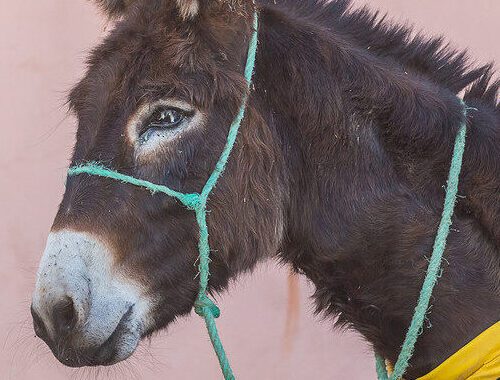Where do donkeys originate from?
Donkeys are believed to have originated from Africa, particularly Egypt, where their lineage can be traced back to the Nubian wild ass and the Somali wild ass, both subspecies of the African wild ass. The hot conditions in Africa have allowed donkeys to evolve and work well under these conditions. Around 3000 BC, donkeys migrated to southwest Asia, leading to the growth of various new species through breeding. This was followed by the Greeks and Romans introducing donkeys to Europe, including modern-day Italy, France, and Spain.
What are the different types of donkeys?
There are over 100 donkey breeds, with 17 known breeds in Europe alone. Among the most popular breeds is the miniature Mediterranean donkey. By nature, it is one of the friendliest and most affectionate donkeys, making it a popular pet. Another popular breed is the grand noir du Berry, from France. These donkeys are often used for agricultural work due to their calm and easy-going nature.
The Poitou donkey is one of the rarest breeds and is endangered, with only a few thousand remaining in the world. Originating from the Poitou-Charentes region in France, these donkeys have a distinctive thick, shaggy, cadanette coat and are among the largest breeds. They were initially bred solely for mule breeding to support the French agricultural economy, but by the 1950s, this ceased due to competition with tractors and lorries.
How long do donkeys live?
Domesticated donkeys live to around 40 years old, with some having been known to live to 50. Wild donkeys often live to around 30 years old, primarily due to the prevalence of parasites and infections. A donkey’s lifespan depends on the level of care it receives and its lifestyle, which varies across different regions of the world.
At SPANA, we help care for working donkeys to transform their welfare. With the right care and love, donkeys can live a very long life.
How big are donkeys?
On average, domesticated donkeys grow to around 45 inches (or 127cm) from hoof to shoulder and weigh around 551 pounds (250kg). This differs in wild donkeys who grow to 36-48 inches (92-123cm) and weigh around 450 pounds (204kg).
What should donkeys eat?
Donkeys are herbivores and grazing animals. In their natural environment, they would browse shrubs and leaves as well as nibble on dry grass. They need a high-fibre diet and eat lots of straw and hay. Donkeys are very effective digesters and can survive and thrive on a lot less than horses, making them extremely drought-resilient compared to other species. They can be prone to overeating, especially on lush grasses commonly found in the UK, so owners must pay close attention to how much they eat and weigh to avoid subsequent health problems.
You can read more about a Donkey’s recommended diet here.
Where do donkeys live?
Donkeys prefer dry, warm climates, so wild donkeys are often found in North and South African deserts. It is estimated that there are 40 million donkeys worldwide, with the majority in China, Ethiopia, Pakistan, Egypt and Mexico.
Do donkeys have a cross on their back?
Yes, many donkeys have a distinctive dark marking in the shape of a cross on their backs. This marking typically runs down the spine and crosses over the shoulders. It’s most prominent in certain breeds, like Nubian and Sicilian Donkeys.
What can donkeys see?
Donkeys, like all equines, have dichromatic vision, meaning they have two-colour vision and can only distinguish between colours on two wavelengths. This differs from humans who have three-colour vision and can see on three wavelengths. Donkeys can see greens and blues clearly but find red more difficult.
They can see 340° without turning their heads, with small blind spots between their ears.
Five Interesting Donkey Facts
- The sound a donkey makes is called a ‘bray’ and is unique to donkeys. The ‘Hee’ noise occurs during air intake and the ‘haw’ noise during the outflow.
- Male donkeys are called ‘Jack’ and females are called ‘Jenny’.
- They are extremely social animals and don’t like to be alone. They form deep, lifelong bonds with other donkeys called ‘pair bonds’.
- On average, they can run up to 30 miles per hour but have also been known to reach a pace of up to 43 miles per hour.
- They have excellent memories and can recognise other donkeys they have seen and places they have been.


